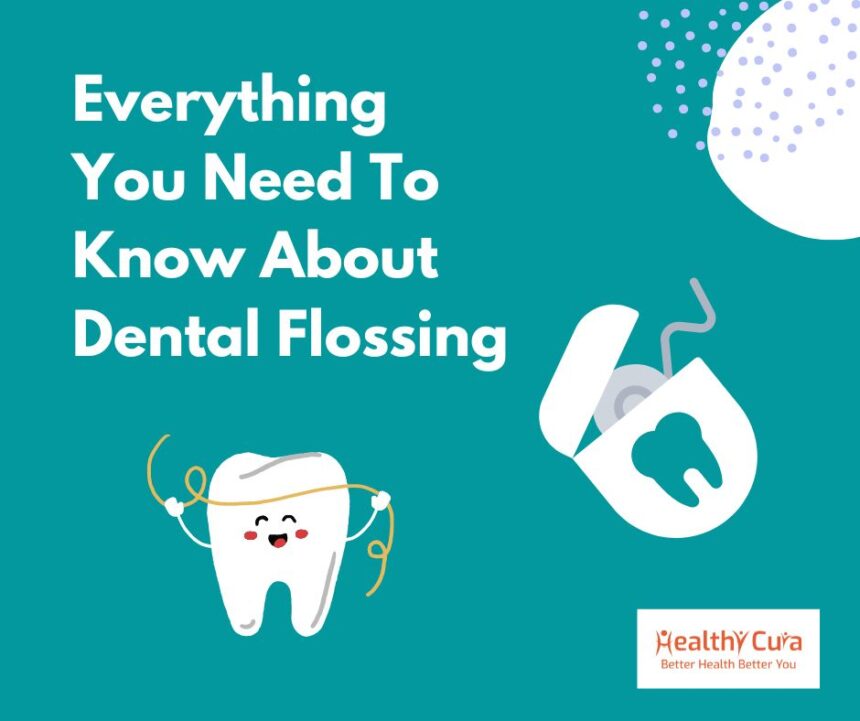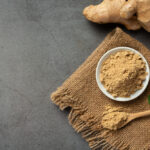Flossing is one of the most important steps in your oral hygiene routine, and yet so many of us avoid it or do it incorrectly. It’s not just about getting rid of food particles left between your teeth; there are myriad benefits to daily flossing that can affect both your dental and overall health. In this blog post, we’ll explore everything you need to know about flossing: what it is, its meaning and importance, how often you should floss, whether you should still floss with braces on and more. Read on to learn more about why daily flossing is essential for optimal oral health.
What is Dental Flossing?
Dental flossing is the process of using a thin thread of material to remove plaque and food particles from between your teeth. It’s an important part of oral hygiene, as it helps to prevent gum disease and tooth decay.
What are the Benefits of Flossing?
It’s no secret that good oral hygiene is important for overall health, but what many people don’t realize is that flossing is just as important as brushing when it comes to keeping your teeth and gums healthy.
Here are just a few of the benefits of making flossing part of your daily routine:
- Most notably, it helps to remove plaque and food particles stuck between teeth that brushing alone can’t reach.
- It also stimulates the gums, encouraging better circulation and healthier tissue.
- Additionally, flossing can help reduce the risk of gum disease and tooth decay by removing bacteria and preventing tartar buildup.
- Flossing also freshens up the breath.
Making flossing a part of your daily dental routine is simple and only takes a few minutes, but the benefits are well worth the effort. So next time you’re reaching for your toothbrush, don’t forget to grab the floss!
Get Started by Selecting the Right Floss for You
Flossing can be done with either disposable or reusable floss. Disposable floss is usually made from nylon or polyethylene, while reusable floss is typically made from silicone or Teflon. There are also different types of floss available, such as waxed and un-waxed, flavored and non-flavored, etc.
Before you start flossing, it’s important to select the right type of floss for your mouth. There are several kinds available in terms of material, size, and thickness. Waxed and unwaxed floss are the two main types.
Waxed floss is coated with a thin layer of wax, providing an extra layer of protection while making it easier to slide between teeth.
Unwaxed floss is ideal if you have wide gaps between teeth since it can maneuver more easily in these spaces.
Additionally, look for thinner varieties if you’re dealing with tight spaces.
When choosing a type of floss, be sure to look for one that is strong and won’t break easily. You’ll also want to choose a type of floss that is comfortable to use. If you have braces, you may need to use a special type of floss that is designed for use with braces. Be sure to ask your dentist or orthodontist for recommendations on the best type of floss to use.
Learn How to Properly Floss Your Teeth
Flossing is an important part of oral hygiene, and it’s important to do it properly in order to avoid gum disease and other problems.
Flossing is the best way to remove plaque and food particles between teeth, where your toothbrush can’t reach.
Here’s How to Floss Properly
- The American Dental Association (ADA) says that the proper way to floss is to use about 18 inches of dental floss.
- Wrap most of the floss around your middle finger, and hold it with your thumb and index finger.
- Then, holding the dental floss tightly between your thumbs and index fingers, guide it up and down between your teeth.
- Be sure to follow the curve of each tooth as you do this.
- When you get to the gum line, move the dental floss away from the tooth at a 45-degree angle and then gently slide it up and down along the side of the tooth.
- Do this for each tooth, including those in the back of your mouth.
- Use a clean section of dental floss as you move from tooth to tooth so that you don’t re-introduce bacteria into your mouth.
Rinse Out and Repeat!
After you’ve flossed, rinse your mouth out with water or an antiseptic mouthwash to remove any plaque and food particles that were loosened by the floss.
Repeat this process at least once daily for best results. Keep in mind that intermittent flossing is just as effective as daily flossing—what matters most is that you are consistent with it over time.
How to Floss With Braces
If you have braces, flossing may seem like a difficult task. However, it is still important to floss your teeth regularly in order to prevent cavities and gum disease.
Here are some tips on how to floss with braces:
- Use a floss threader to help you floss around your braces.
- Be sure to floss under the wire of your braces as well as in between each tooth.
- Use gentle movements when flossing so that you do not damage your gums or tooth enamel.
- Rinse your mouth with water after flossing to remove any food particles or plaque that may have been loosened during the process.
- Consider using a water flosser or interdental brush to help clean around your braces if you find it too difficult to floss with traditional string floss.
By following these tips, you can ensure that your teeth remain healthy and clean even with braces!
Flossing Tips
Flossing is an important part of oral hygiene, and there are a few things you should know about it!
Here are some tips on flossing:
- Be sure to floss at least once a day, and more if you can.
- When flossing, be gentle with your gums and use a slow back-and-forth motion.
- If you have braces, be extra careful when flossing around them. Use a special flossing tool or ask your dentist for help.
- Don’t forget to clean all surfaces of your teeth, including the backs of your molars.
Following these tips will help keep your smile healthy and sparkling!
Flossing Before or After Brushing Teeth?
Flossing is an important part of oral hygiene, but many people don’t know when the best time to floss. Some dentists recommend flossing before brushing your teeth, while others recommend it after brushing. In the end, you should floss whenever it works best within your schedule.
If you floss after brushing, be sure to rinse your mouth out with water afterward to remove any debris that was loosened by the floss. If you floss before brushing, your toothbrush will help remove any debris that was loosened by the floss.
Whichever method you choose, be sure to use gentle pressure and move the floss up and down each tooth. Don’t push the floss against your gums; doing so can irritate your them.
How Many Times Should One Floss?
The American Dental Association (ADA) recommends that you floss at least once a day. But even if you floss every day, you may not be doing it correctly.
You can see our section “Learn How to Properly Floss Your Teeth” for doing it correctly.
However, some people may need to floss more often, depending on their oral health.
People who have braces or other dental devices may need to floss more frequently, as plaque and bacteria can build up around these devices.
If you are unsure how often you should be flossing, talk to your dentist or dental hygienist.
What Happens If You Don’t Floss?
Without flossing, plaque and bacteria are able to build up in the small spaces between your teeth. This can lead to gum inflammation, gingivitis, and eventually periodontal disease. Periodontal disease is a serious infection of the gums that can destroy the bone supporting your teeth and lead to tooth loss.
In addition, not flossing can also lead to bad breath, discoloration of the teeth, cavities, and an increased risk of heart disease.
When Flossing Gums Bleed, Why?
If your gums bleed when you floss, it’s usually because you have inflammation in your gums (gingivitis). Plaque formation on the teeth is responsible for this problem. Plaque is a bacterial biofilm that develops on teeth and gums. If not removed, plaque can harden into tartar, which is much more difficult to remove.
Plaque builds up on teeth and gums if you don’t floss regularly. Gentle back-and-forth motions are the best while flossing. You may see some blood when you first start flossing, but this usually goes away after a few days. If the bleeding doesn’t stop, or if it gets worse, you should see your dentist.
Why Choose Floss Over Toothpick?
Flossing is an important part of oral hygiene, and there are many benefits to choosing floss over a toothpick. Flossing removes plaque and bacteria from teeth and gums, helps to prevent gum disease, and can help to whiten teeth.
It is also more effective than a toothpick in reaching between teeth and removing food particles. Finally, flossing with braces is easier than using a toothpick, and it is less likely to damage braces or injure gums.
In summary, flossing is a superior oral hygiene practice to using a toothpick and should be used for optimal dental care.
Switch It Up with Interdental Brushes and Water Flossers.
If you’re not a fan of regular flossing, there are alternatives available.
Interdental brushes are tiny brush-like cleaners that can reach in between teeth and remove plaque and food particles—great for hard-to-reach spots!
Water flossers, also known as oral irrigators, work by shooting water in between teeth to dislodge debris.
So, if traditional flossing isn’t the right fit for you and your oral health routine, explain this to your dentist and they can help you find an alternative.
Is Water Flossing More Effective Than String Flossing (Regular Flossing)?
When it comes to flossing, there are a few different options available to choose from. One of the most popular choices is water flossing, which many people believe to be more effective than string flossing (regular flossing).
The question now is, how are these two methods different from one another? And which one is better for your oral health?
Water flossing uses a stream of water to remove plaque and food debris from teeth and gums. This method is often considered more effective than string flossing because it can reach areas that regular floss may not be able to reach. Water flossing is also gentle on the gums and helps to reduce inflammation.
String flossing, on the other hand, uses a piece of string or dental tape to remove plaque and food debris from teeth and gums. While this method is not as effective as water flossing, it is still an important part of oral hygiene. String flossing should be done at least once per day in order to remove plaque and prevent gum disease.
So, which method is better? Water flossing or string flossing? The answer is you’ll have to consider your own requirements and preferences to determine the best method for you.
If you have braces or other dental devices, water flossing may be the better option for you. If you have sensitive gums, you may find that string flossing is more comfortable.
Ultimately, the best way to clean your teeth and gums is to use a combination of both methods.
Why Do People Neglect Flossing So Much?
The American Dental Association (ADA) reports that only half of the American adults floss daily, even though the ADA and other dental organizations recommend flossing at least once a day. Why do people neglect flossing so much?
There could be a number of reasons. For one, many people simply don’t see the need to floss if they brush their teeth regularly. They may not realize that brushing alone cannot remove all the plaque and bacteria from their teeth and gums.
Another reason people may neglect flossing is that it can be time-consuming and difficult to do properly. Flossing with braces, for example, can be challenging. Some people may not know how to floss correctly or they may find it painful.
Whatever the reason, failing to floss can have serious consequences for your oral health. Neglecting to floss can lead to gum disease, tooth decay, and bad breath. If you’re not sure how to floss properly, ask your dentist or dental hygienist for help.
What is the Best Brand of Dental Floss?
There are many brands of dental floss on the market, so it can be difficult to choose the best one. However, there are a few factors to consider when choosing a brand of dental floss.
The first factor is the type of floss you prefer. There are two main types of dental floss: waxed and un-waxed.
Some people prefer waxed floss because it slides more easily between teeth and does not shred as easily as un-waxed floss. Others prefer un-waxed floss because it is less likely to slide out of place and is easier to grip.
The second factor to consider is the flavor of the floss. Some brands offer unflavored floss, while others offer minty or fruity flavors.
If you have sensitive gums, you may want to choose a brand that offers an extra gentle formula.
Finally, consider the price of dental floss. It’s not always the case that the higher price tag indicates a higher quality product when it comes to brand names.
Ultimately, the best brand of dental floss is the one that meets your individual needs and preferences.
Conclusion
Flossing is an important part of oral hygiene and should be done on a daily basis. It helps to remove plaque, food particles, and other debris that can accumulate between your teeth and gums, which can lead to cavities and gum disease if left unchecked.
Flossing with braces may take some extra care but is still necessary in order to ensure healthy teeth and gums throughout the duration of treatment. With this guide, you now have all the information you need to floss properly so that you can maintain excellent oral health for life!













